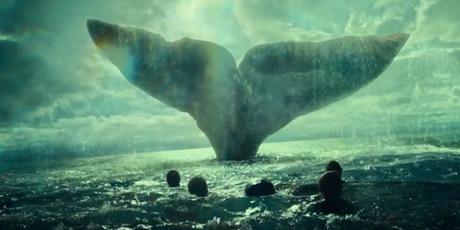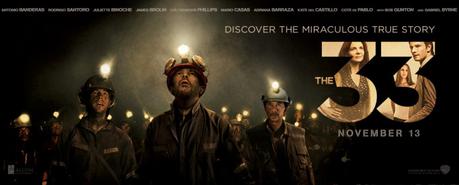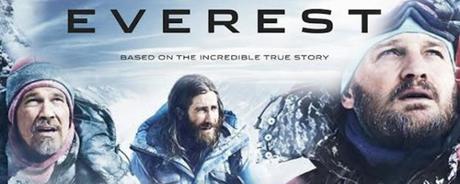Another “inspired by a true story” event movie has come and bombed. This time it’s The Finest Hours, which I quite liked (here’s my review). It reportedly cost $70-80 million to produce, but only made $10.3 million this weekend. After a start like that, it’s as dead in the water financially as the split-in-half tanker at the heart of its story.
Deja vu, right?
A couple of weeks ago, it was 13 Hours: The Secret Soldiers of Benghazi, Michael Bay’s polarizing ode to heroes in the war on terror. It so wanted to be the next American Sniper, but instead it opened far below expectations and is now nearly out of the top 10 before it’s even made back its production budget ($50m).

Ah, such optimism. Of course, the film was swallowed whole by Star Wars, ending with a final domestic total of $24m off of a $100m prod. budget.



After ever failure we had to ask, “Why did this happen?” I previously did that after Everest/The Walk and In the Heart of the Sea. The common denominator between all of them is they’re based on true stories with either relatively well-known or easily predictable endings. Several of them were sold on the appeal of one awe-inspiring, “demands to be seen on the big screen” sequence. However, where was the narrative tension if we knew how the story would play out?
As much as I liked the finished film, I can tell you that if you’ve seen the trailers for The Finest Hours you’ve pretty much seen the movie. With films like that, it’s as if the studio is gambling, “You’ll know the ending going in, but you’ll be thrilled to see how we get there and inspired by the human drama.” In most cases, that seems to have backfired, and resulted in several perfectly fine films which will become welcome additions to rainy day viewing options for schoolteachers. However, that doesn’t help a studio’s bottom line.
There are a variety of other factors to consider. Everest and The Walk opened within weeks of each other and utilized the same exact experimental release strategy, arguably cannibalizing one another and confusing audiences. The 33 was sandwiched in-between the openings of Spectre and Hunger Games: Mockingjay-Part 2, and In the Heart of the Sea had the misfortune of opening the week before the new Star Wars. 13 Hours became a political soccer ball and could not get past anti-Michael Bay sentiment. The Finest Hours was capsized by Kung Fu Panda 3.
The fact that all of them lean heavily male didn’t help (very few notable female characters in any of them). Plus, there is the instant eye-roll factor where after getting at least one of these kinds of movies every month since September you build up an intolerance for anything which begins with the phrase “Based on a true story.”
The exact reason we kept getting these movies is likely tied to a variety of influences, be it the post-Gravity push toward eventivizing IMAX releases or simple things like, “If Captain Phillips made so much money then maybe The Finest Hours/In the Heart of the Sea….” The same goes for American Sniper and 13 Hours. You also can’t ignore the movement toward making increasingly language-neutral movies which can play well worldwide, thus easily translatable stories, e.g., “People go up a mountain. Not all of them come back”/”Big whales are mean. Thor fights back.”/”Guy walks on a tight rope. Doesn’t fall.”/”Kirk saves Casey Affleck and pals, girlfriend cries while he’s away.”
If that last point is at least a little true, it certainly paid off for Everest, and it theoretically could again for The Finest Hours which is staggering its foreign roll-out. However, for a variety of reasons Hollywood fell into a trend of making “inspired by a true story” event movies, usually allocating what would be considered a mid-sized budget to each production, and for a variety of reasons it usually backfired. If you widen the net to not just look at action movies you’ll see that other “based on a true story” movies have been more miss (like Spare Parts) than hit (like McFarland, USA) lately. It could be another indication that what we as ticket-buying audiences define as movies we’ll pay to see is getting smaller and smaller. It could also mean that in this golden age for amazing documentaries and Serial/Making a Murderer true crime stories the Hollywood version of real life stories looks less appealing and far more plastic than ever before.
But, seriously, The Finest Hours is actually pretty good.
13 Hours
- Domestic: $42m
- International: $1m
- Worldwide: $43m
- Prod. Budget: $50m
In the Heart of the Sea
- Domestic: $24m
- International: $65m
- Worldwide: $89m
- Prod. Budget: $100m
The 33
- Dom.: $12m
- Int.: $12m
- World: $24m
- Prod. Budget: $26m
The Walk
- Dom.: $10m
- Int.: $41m
- World: $51m
- Prod. Budget: $35m
Everest
- Dom.: $43m
- Int.: $159m
- World: $203m
- Prod. Budget: $55m

